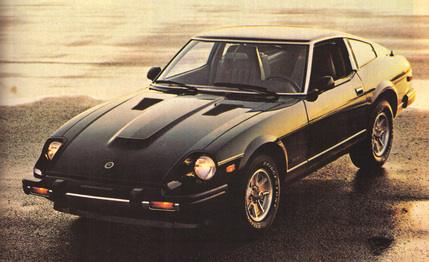 First Drive Review
First Drive Review

When Datsun introduced its 1979 model to the press, the joke of the meeting was that these cars would he competing headon with Buick and BMW by Christmas -- not because of a massive overhaul in the Japanese company's marketing philosophy, but rather because of the plummeting value of the dollar relative to that of the yen. Datsun would not be building Buick-style cars; it would simply be offering its weight-watcher compacts at Buick prices.
But driving the new 280-ZX coupe suggests that Nissan has been anticipating exactly this sort of repositioning in the market all along and has already dialed in the appropriate correction. The new Z-car (ZX-car?) is strongly biased toward the luxury side of life. It's longer, lower, and wider than the old version; quieter and more vibration-free on the inside; calibrated for a mashed-potatoes ride underneath; and just itching to be dolled up with all sorts of packages and gadgets, which the option list cheerfully offers. What was once an appealingly lean sportster has been transformed into a plush boulevardier, a personal cruiser not altogether different from what you'd expect of Buick if it took up a position in the two-seater and 2 + 2 market.
All of this probably makes perfect sense from a hit-'em-where-they-ain't marketing point of view. The closed-roof-sports-car business-once the almost exclusive province of Datsun-has become a hotbed of activity in the last few years. Porsche now occupies the high end of the middle-price class with its sleek and nimble 924, an automobile that places great emphasis on handling and driver participation. Mazda is putting the squeeze on from the bottom of the price range with its RX-7, a two-seater that's winning friends everywhere for its agility and sparkling performance. The TR7 has been brought to its knees temporarily because of labor problems in England, but it will be back in full strength by spring, bringing along with it the V-8powered TR8, which will surely set the performance pace for this class. So what was Datsun to do? The only space left uncontested is the comfort-and-luxury slot. The old Z-car always was a bit more of a tourer than its competitors, and the product planners apparently decided to aim its replacement even more in that direction.
The term "replacement" is used intentionally here because the new ZX is essentially an all-new car. It retains certain visual characteristics of the Z-the scalloped headlight tunnels, the powerbulge hood, and the large, multicell taillights-and the powertrain is carried over with only minor recalibrations, but the body and the chassis are altogether different. The greatest dimensional change is in width, the new car being 2.3 inches wider overall and having an extra inch of wheel track (more with the optional alloy wheels). The wheelbase has been increased by 0.6 inches, and although the new model looks considerably longer, the actual increase is less than an inch. Apparently what happened here is that the sheetmetal is longer but the bumpers don't stick out as far, resulting in an appearance of greater length with little real change. Some similar optical illusion must also affect height, because, while the new model looks lower, the company specifications list both the Z and the ZX at 51.0 inches. But even these relatively minor dimensional changes are viewed with great significance in certain quarters. Dick Roberts, head of the competition department, was very pleased indeed with the new body shape. He observed that the greater overall width of the car would let the racers get by with smaller fender flares. That, combined with the more steeply raked windshield, would go a long way toward eliminating the Datsun's considerable top-speed deficit in GTU racing.